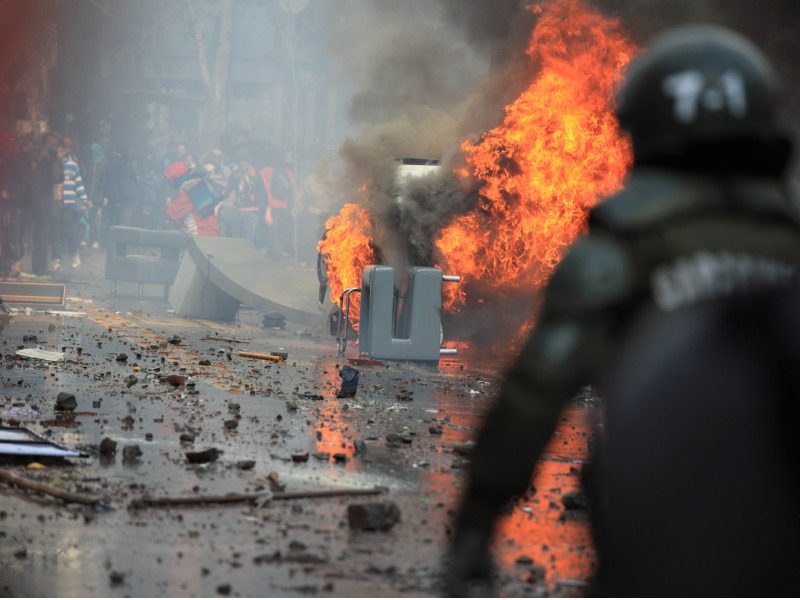How to help your clients prepare for civil unrest

Strikes, riots and violent protests sparked by inflation pose risks to companies, both in terms of physical damage to buildings and other assets, as well as income loss due to business interruption and an inability to access premises, said a risk bulletin from Allianz Global Corporate and Specialty.
“Civil unrest increasingly represents a more critical exposure for many companies than terrorism,” says Srdjan Todorovic, Allianz’s head of crisis management, U.K. and Nordics.
“Businesses need to be alert to any suspicious indicators and designate clear pathways for de-escalation and response, which anticipate and avert the potential for personnel to be injured and/or damage to business and personal property.”
The bulletin referenced demonstrations against COIVD-19 restrictions in Canada, New Zealand and France that included vehicle convoys and disrupted major cities. Allianz commented to CU that the freedom convoy protests cost Canada’s auto industry about $1 billion due to disruption at Ford and Toyota when car parts were held up at U.S. border points.
And pipelines, Todorovic noted, particularly those planned to cross indigenous lands in Canada, could lead to protests and related businesses interruption issues.
The bulletin further cited $1.1 billion in losses for French retailers during the 2018 yellow vest protests, $3 billion in insured losses during 2019 demonstrations in Chile following subway fare hikes, and more than $2 billion in losses from protests following the 2020 death of George Floyd at the hands of police.
“Economic and insured losses from previous protests have been significant, creating substantial claims for companies and their insurers,” Allianz noted.
The bulletin said the civil unrest outlook is most bleak for 34 countries that face significant deterioration by August 2022 – 12 in Europe and Central Europe, 10 in the Americas, six in the Africa, three in the Middle East and North Africa, and three in Asia.
“Unrest can occur simultaneously in multiple locations as social media now facilitates the rapid mobilization of protestors,” added Todorovic. “This means large retail chains, for example, could suffer multiple losses in one event at various locations in a country.”
The bulletin offered best practices for businesses in those regions, including maintaining close communications with law enforcement at all levels, and coordinating response plans across police, fire, medical and related private-sector disciplines.
It also recommended conducting threat analysis and examining site security. Allianz said evacuation plans must be in place, including regular drills, and establishment of safe areas and emergency communications protocols for all employees.
“Companies should review…their insurance policies in the event of increasing local unrest activity,” the bulletin said. “Property policies may cover political violence claims in some cases, but insurers offer specialist coverage to mitigate the impact of strikes, riots and civil commotion.”
Further, it advised companies to close before high-risk times (including prior to scheduled protests and at night), bolstering security and exterior lighting, removing materials from the site that could be burned or thrown, and removing or securing high-value inventory (including cash, securities, electronics and medicines).
Feature image by iStock.com/erlucho



